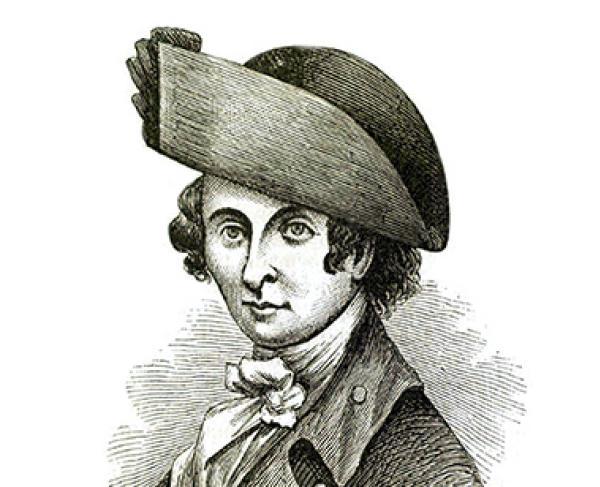Barry St. Leger

Barrimore Matthew “Barry” St. Leger was born into a wealthy Huguenot family in about 1737 in County Kildare, Ireland. He was educated at Eton College and Peterhouse, Cambridge in England. In 1756, he joined the British Army as an Ensign in the 28th Regiment and was sent to the Americas a year later to fight in the French and Indian (Seven Years) War. He served at the rank of captain in the Siege of Louisbourg in 1758 and the capture of Montreal in 1759. He rose in rank two more times in two more regiments before becoming lieutenant colonel of the 34th Regiment.
In 1777, he was given the command of the western branch of General John Burgoyne’s New York invasion as a brevet brigadier general during the American Revolution. Burgoyne’s invasion was a three-pronged attack that would have Burgoyne advance south from Canada to capture Fort Ticonderoga and then continue to Albany. Sir William Howe would advance up from New York City and St. Leger would advance through the Mohawk River Valley and secure a western water route between Canada and New York City. However, as Burgoyne marched towards Albany, he was not informed of his comrades’ actions. While Howe got side-tracked in trying to capture Philadelphia, Pennsylvania, St. Leger got caught up in a 21-day siege at Fort Stanwix.
Arriving at the fort on August 2nd, 1777, St. Leger ordered the opposing commander, Col. Peter Gansevoort, to surrender. He refused and the two sides settled in for a siege that lasted until August 22nd when St. Leger received disinformation from American Gen. Benedict Arnold. St. Leger and his men were led to believe that Arnold had 3,000 men advancing towards St. Leger’s force when Arnold only had 700 troops. Fearing the story to be true and experiencing tension from his native allies, St. Leger abandoned the siege on Fort Stanwix. The drawn-out siege delayed St. Leger’s arrival to Albany and contributed to Burgoyne’s eventual surrender at Saratoga on October 17th, 1777.
He is mainly remembered for his failure at Fort Stanwix even though he went on to become a colonel in 1780 and commanded a group of rangers in Canada. He led secret expeditions in the American colonies, including two attempts at kidnapping American Gen. Philip Schuyler and negotiating the possibility of Vermont becoming an independent British colony. St. Leger’s Journal of Occurrences in America was published in London in 1780. However, St. Leger’s name disappears from the British Army lists in 1785 and it is believed that he died in 1789.

